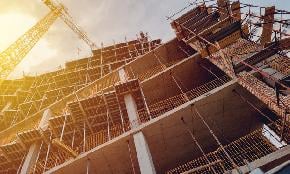 6012 Monroe Court in Morton Grove, IL. Dayton Street Partners, the new owner, plans to transform the ’60′s era building into modern distribution facility that can serve the dense northern suburbs of Chicago.
6012 Monroe Court in Morton Grove, IL. Dayton Street Partners, the new owner, plans to transform the ’60′s era building into modern distribution facility that can serve the dense northern suburbs of Chicago.
CHICAGO—Distribution facilities for e-commerce are popping up in close proximity to the population centers of major US cities, creating a foundation for rapid-delivery service that didn’t exist on this scale just a few years ago, according to a new report from CBRE. CBRE analyzed the location of so-called “last-mile” distribution facilities opened within just the past two years in the 15 largest US population centers, finding that they are positioned, on average, between six and nine miles from the center of the largest population areas they serve.
And many are not the sleek, class A structures that have become so popular with users. It’s all about getting access to areas with dense populations, and industrial facilities with high ceilings and other class A attributes tend to be in outlying areas.
“A lot of these are older class B facilities that are infill locations in the older industrial corridors,” David Egan, global head of CBRE’s industrial and logistics research, tells GlobeSt.com. Distributors “prefer to have class A buildings, but those are rarely available.”
Denser cities such as Chicago, Boston, Washington, DC, New York tend to have shorter average distances. In San Francisco, for example, the average is just six miles. Meanwhile, cities that are more spread out have longer averages, such as 7.5 miles in Houston, 8.5 miles in Phoenix and nine miles in Southern CA’s Inland Empire. In compiling these average distances, CBRE focused on distribution centers smaller than 200,000 square feet.
And this reconstruction of the US supply chain does not just concern one or two headline-grabbing e-commerce providers.
“This is broader than e-commerce,” Egan says. Instead, it’s about a change in consumer behavior and expectations that touches every brick-and-mortar retailer in the US. Earlier this decade, goods ordered online often were delivered to customers from huge, outlying facilities, sometimes in other states. But shoppers increasingly expect nearly instantaneous delivery of their orders, and companies need to dramatically change how they handle logistics.
“Calling it last mile is in some ways missing the point,” he adds. “It’s about the last touch,” or a package’s last stop before hitting the customer’s door step. And what this means will probably differ for every distributor. To properly site their last stop facilities, each has to figure out exactly where their customers are, how often they make purchases, and what changes they anticipate over the next few years.
And that’s when the really tough job begins, Egan says, because businesses then need to calculate just how much they can spend on securing and staffing extra facilities. In some ways, the basic real estate questions are comparatively easy. “Once you solve all that, you can find a building.”
The complexity of the task means it’s going to take time to get it right, he adds. “E-commerce in general is in its very early stages, and this particular aspect is even earlier. Right now, it’s a lot of guess work, and guessing is expensive if you don’t guess right.”
Cities and other municipalities also have work to do to help this transformation continue. “There is going to have to be rezoning,” says Egan, perhaps of existing big-box retail buildings that have been undercut by e-commerce. ”There may be some pushback from people who live in these neighborhoods,” and users will have to prove distribution operations can co-exist in dense areas. But structures like this already provide quick access to customers, adequate parking, and the necessary loading docks. “They’ve got what you’re looking for. It’s a great solution to the problem.”

















 Copyright © 2025 ALM Global, LLC. All Rights Reserved.
Copyright © 2025 ALM Global, LLC. All Rights Reserved.